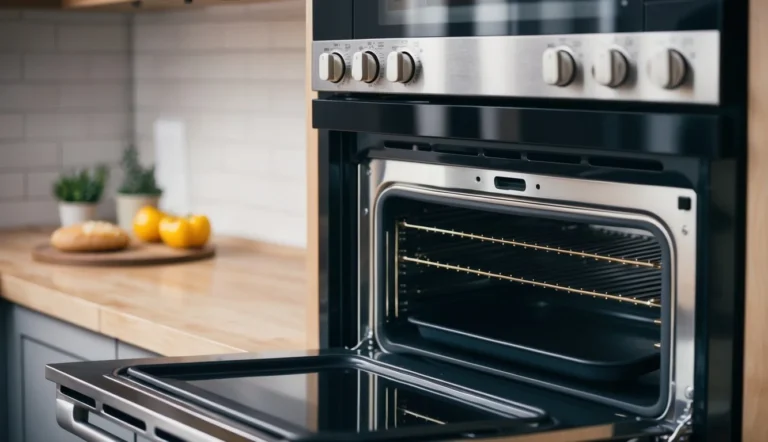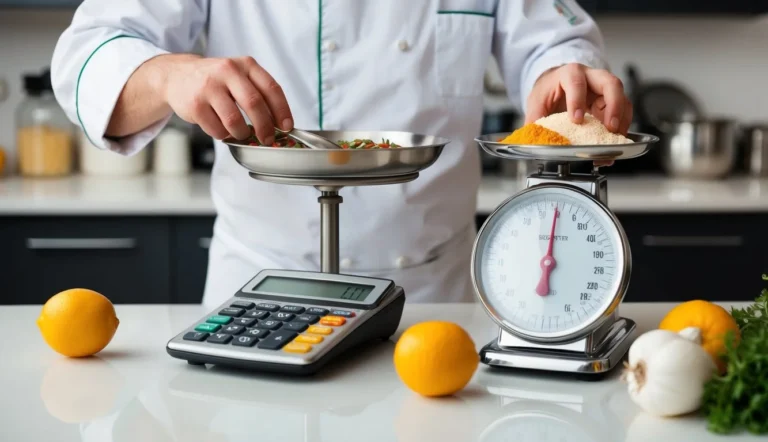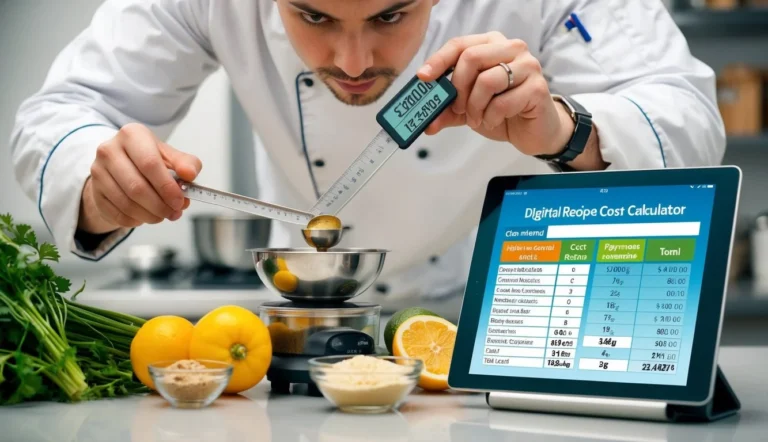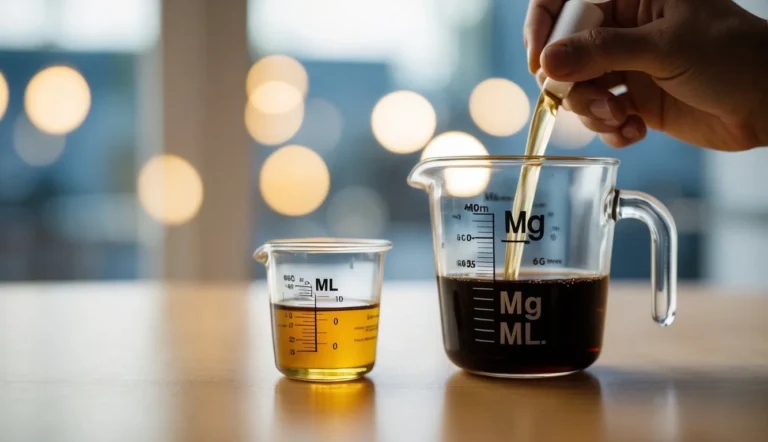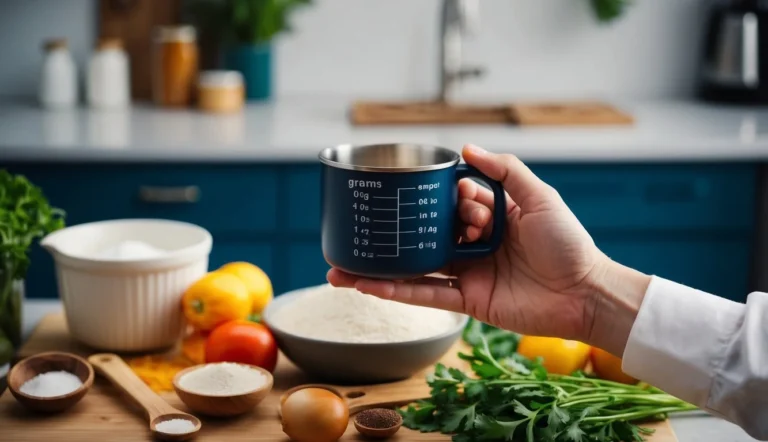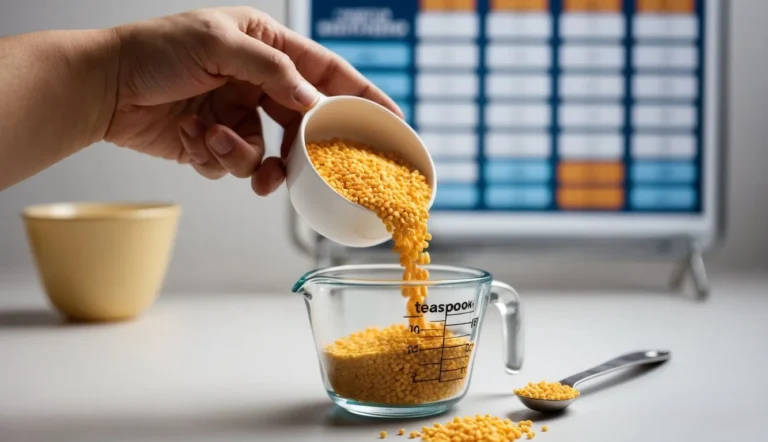Grams to Tablespoons Converter: Easily Convert Ingredients for Cooking and Baking
Grams to Tablespoons Converter
Easily convert grams to tablespoons, 1/2 tablespoons, and 1/4 tablespoons for all your cooking and baking needs!
0 Tablespoons
0 1/2 Tablespoons
0 1/4 Tablespoons
Introducing our Grams to Tablespoons Converter – the ultimate kitchen tool for precise cooking and baking! Whether you’re measuring flour, sugar, or spices, this easy-to-use calculator converts grams into tablespoons, 1/2 tablespoons, and 1/4 tablespoons in seconds. Perfect for home cooks and professional bakers alike, it ensures accurate measurements every time. Say goodbye to guesswork and hello to perfectly portioned recipes!
Grams to Tablespoons: Accurate Conversion Guide
Converting grams to tablespoons can be puzzling when you’re working in the kitchen or laboratory. This conversion isn’t always straightforward because grams measure mass while tablespoons measure volume.
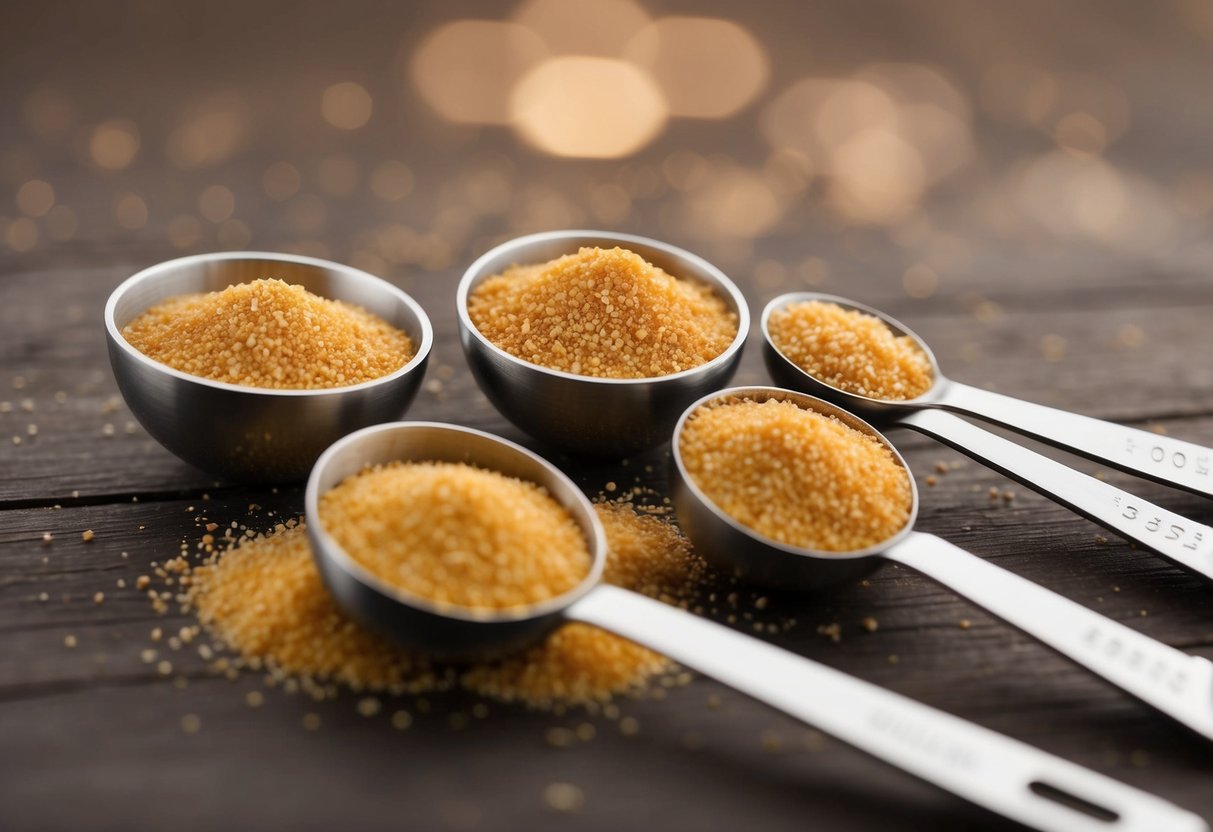
In chemistry, these conversions become particularly important when precise measurements affect chemical reactions. Scientists often need to convert between mass and volume units when working with different substances in the laboratory. Understanding these conversions helps ensure accuracy in both cooking recipes and chemical formulations.
Different substances have different densities, which explains why the same volume of various ingredients will have different weights. Salt, sugar, flour, and water all have unique gram-to-tablespoon ratios that chemists and cooks alike must consider when making precise measurements.
Grams To Tablespoons
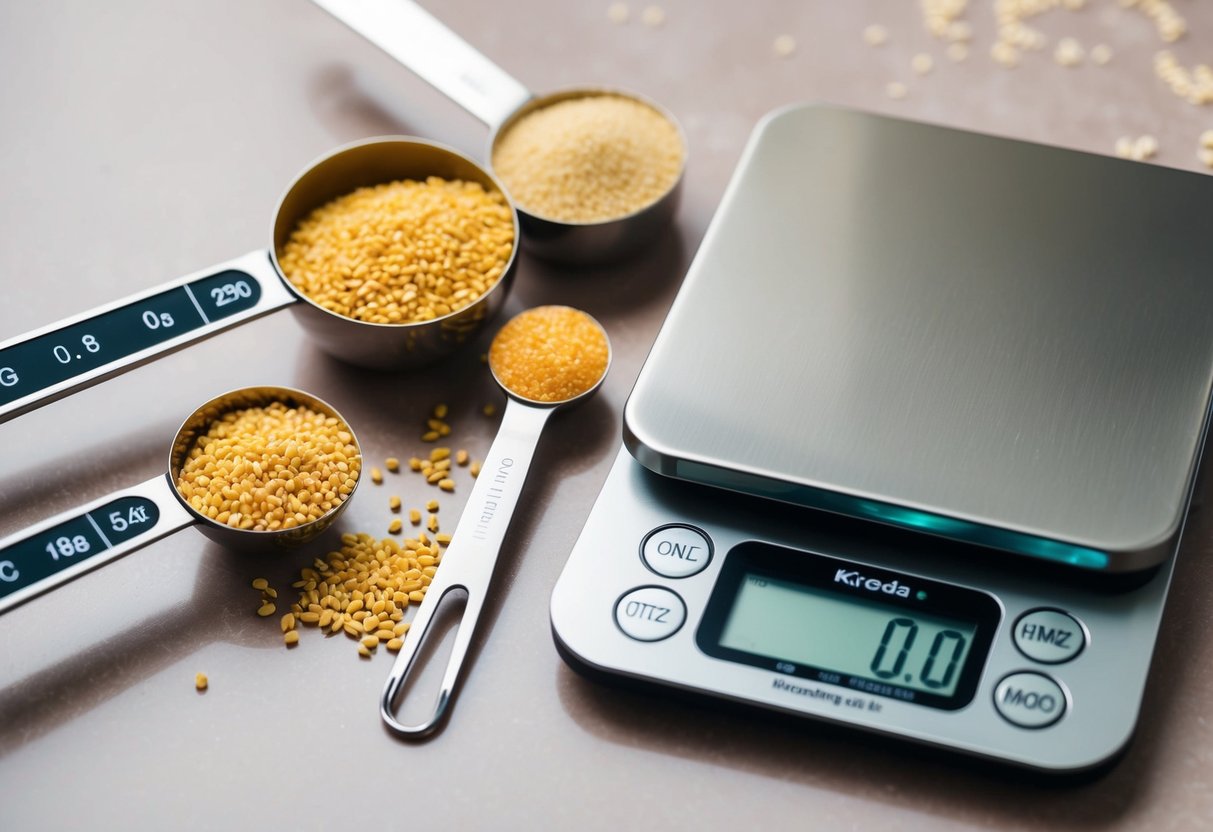
Converting grams to tablespoons can be challenging because grams measure weight while tablespoons measure volume. The conversion depends on the density of the ingredient you’re measuring.
For water, 1 tablespoon equals approximately 15 grams. This conversion factor serves as a baseline, but varies significantly with different ingredients.
Related: Pizza Calculator
Sugar conversions differ slightly from water. 1 tablespoon of granulated sugar weighs about 12.5 grams. This means 30 grams of sugar equals about 2.4 tablespoons.
Common baking ingredients have established conversion ratios:
| Ingredient | 1 Tablespoon (in grams) |
|---|---|
| Water | 15g |
| Sugar | 12.5g |
| Salt | 18g |
| Flour | 8g |
| Butter | 14g |
It’s important to note that US tablespoons (14.79 ml) differ slightly from metric tablespoons (15 ml), which can affect precision in recipes.
For accurate cooking results, using a kitchen scale to measure ingredients by weight is recommended. Weight measurements provide greater consistency than volume.
Related: Grams To Teaspoons
Many online conversion calculators can help with specific ingredient conversions. These tools account for density differences and provide more accurate results than general conversion tables.
Professional bakers prefer working with grams rather than tablespoons because weight measurements are more precise. Volume can vary based on how ingredients are packed.
When precise measurements matter, remember that converting between weight (grams) and volume (tablespoons) introduces potential inaccuracy. The specific density of your ingredient always affects the final conversion.
Grams To 1/2 Tablespoons
Converting grams to half tablespoons is an important skill in the kitchen, especially when working with precise recipes. A standard tablespoon equals approximately 15 grams, which means a half tablespoon equals about 7.5 grams.
This conversion varies depending on the substance being measured. Different ingredients have different densities, affecting how much they weigh in a half tablespoon.
Common Conversion Examples:
| Ingredient | Grams in 1/2 Tablespoon |
|---|---|
| Water | 7.5 g |
| Salt | 9 g |
| Sugar | 6.5 g |
| Flour | 4 g |
| Butter | 7 g |
For dry ingredients like flour or powdered sugar, the weight can vary significantly. A half tablespoon of flour typically weighs about 4 grams, while the same volume of salt weighs approximately 9 grams.
When converting a recipe from grams to half tablespoons, one should divide the gram measurement by 7.5 for water-based liquids. For other ingredients, it’s best to use the specific conversion factor for that substance.
Professional bakers often prefer working with weight measurements (grams) rather than volume measurements (tablespoons) because they provide more accuracy. However, knowing these conversions helps when kitchen scales aren’t available.
Many modern measuring spoons include half tablespoon measurements, making these conversions easier to implement in cooking. If a recipe calls for 15 grams of an ingredient, using two half tablespoons often provides more precise measurements than one full tablespoon.
Grams To 1/4 Tablespoons
Converting grams to quarter tablespoons requires understanding the basic conversion factors. One tablespoon equals approximately 15 grams for water or similar density substances. Therefore, a quarter tablespoon equals about 3.75 grams.
For precise cooking measurements, it’s helpful to have a conversion table handy. The following table shows common gram measurements converted to 1/4 tablespoons:
| Grams | 1/4 Tablespoons (approx.) |
|---|---|
| 1g | 0.27 |
| 2g | 0.53 |
| 3g | 0.8 |
| 4g | 1.07 |
| 5g | 1.33 |
| 10g | 2.67 |
| 15g | 4 |
| 20g | 5.33 |
| 25g | 6.67 |
| 50g | 13.33 |
These conversions may vary slightly depending on the substance being measured. Dry ingredients like flour or sugar have different densities than liquids.
To convert any gram measurement to 1/4 tablespoons, multiply the gram value by 0.267. This calculation works for most standard cooking ingredients.
Example: To convert 30 grams to 1/4 tablespoons, multiply 30 by 0.267, which equals approximately 8 quarter tablespoons.
For ingredients with significantly different densities, specific conversion factors may be needed. Lighter ingredients like flour might require more quarter tablespoons per gram than denser ingredients like honey.
Kitchen scales provide the most accurate measurements for cooking. However, these conversion guidelines can be particularly useful when precise measuring tools are unavailable.
Selecting Ingredients From The List
To convert grams to tablespoons, consider the ingredient you’re measuring. Different ingredients have varying densities, which significantly affect the conversion.
Common dry ingredients and their approximate gram-to-tablespoon conversions can be helpful to know. For instance, 12-14 grams of granulated sugar equals approximately one tablespoon, while powdered sugar is lighter at about 8 grams per tablespoon.
Baking ingredients often need precise measurements for successful results. A tablespoon of flour weighs roughly 7-9 grams, whereas cocoa powder comes in at about 5-7 grams per tablespoon.
| Ingredient | Grams per Tablespoon |
|---|---|
| Granulated sugar | 12-14g |
| Powdered sugar | 8g |
| All-purpose flour | 7-9g |
| Salt | 18g |
| Baking powder | 12g |
Cooking ingredients like spices tend to be lighter than dense substances like honey or molasses. The density of each ingredient determines how much it weighs in a tablespoon measure.
For accurate recipe conversions, select the specific ingredient from a comprehensive list rather than using a general conversion. This precision ensures consistent cooking and baking results.
Many cooking professionals rely on weight measurements because volume-to-weight ratios vary so much between ingredients. When selecting from an ingredient list, look for the exact item you’re using rather than a similar substitute.

